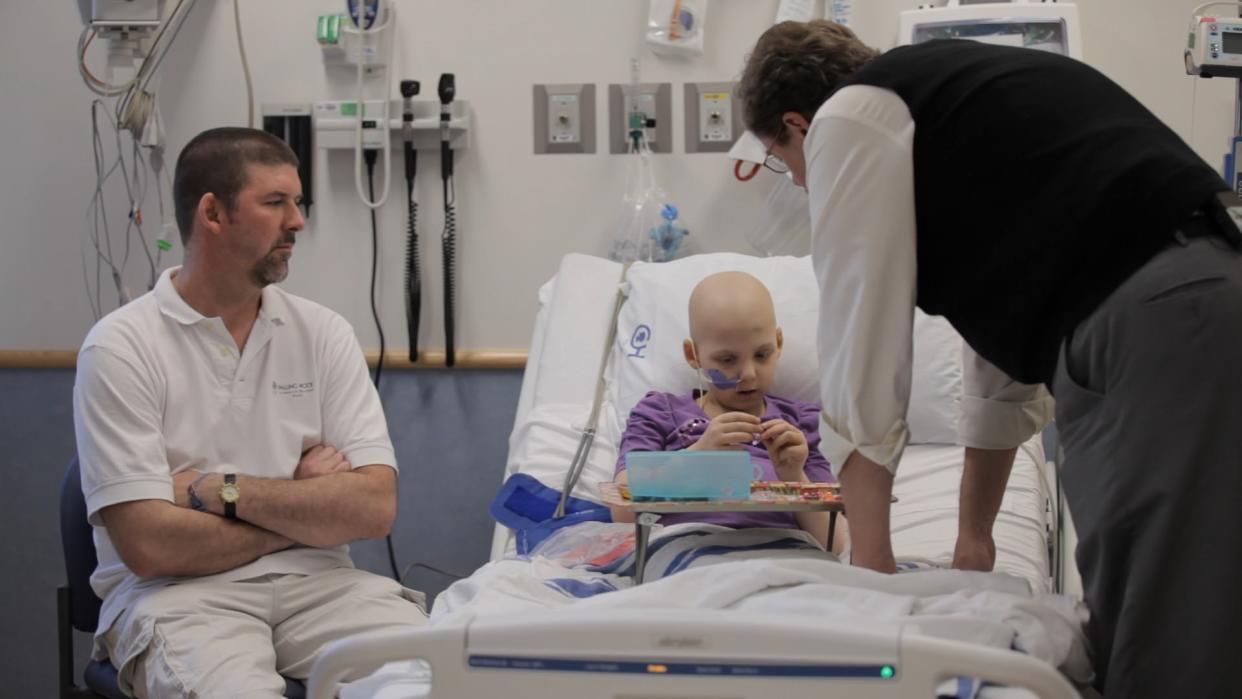Immunotherapy: The new weapon in the fight against cancer

By Molly McGuiness
The idea that we could use our bodies to fight cancer is nothing new.
Dr. Siddhartha Mukherjee explains, “We think of science as a kind of linear narrative. But of course it’s a circular narrative as well. You look at the past to figure out, ‘Well, wait a second, maybe that thing that really died an early death could be recovered and rejuvenated.’ And now it’s an amazingly important cancer medicine. That’s what makes it a detective story.”
Yahoo Global News Anchor Katie Couric sat down with Mukherjee and filmmaker Ken Burns to discuss the new documentary “Cancer: The Emperor of All Maladies.” The six-hour, three-part film series, airing on PBS on March 30 and 31 and April 1, unravels the mystery of cancer through the patients who battle the disease and the researchers and scientists who have dedicated their lives to treating it.
Immunotherapy was first explored by a 19th-century surgeon named William Coley at Memorial Hospital in New York City.
Coley made a compound of infectious bacteria and injected it directly into the tumors of patients, hoping to trigger a fever that would overwhelm the cancer. Some of his patients were cured, but no one was able to duplicate his results, and for decades immunotherapy remained on the fringes of cancer research.
But a few scientists kept it alive, and now it’s making a comeback thanks to innovations by doctors like Carl June at the University of Pennsylvania and Steven Rosenberg at the National Cancer Institute. “There are two ways it’s really being used,” says Mukherjee. “One is that scientists are injecting back immune cells from your own body. They’re training them in the lab to kill cancer cells and injecting the cells back. And then there’s a separate way it's coming back, in which people are taking drugs — and those drugs release the brakes that the immune system has and basically accelerate the immune system to kill the cancer cells.”
In April 2012, Emily Whitehead, a 6-year-old girl battling leukemia, had taken a turn for the worse. Out of options, her parents enrolled her in a new trial at Children’s Hospital of Philadelphia.
The trial was for a treatment developed by Dr. Carl June. June had a theory that T-cells could be redirected to see cancer cells as bad cells by putting a new gene into the T-cell. By re-engineering T-cells this way, June would create a living drug attuned to each patient’s cancer.
Emily was the first child and only the fourth person ever to receive this treatment, and as the trial began the new cells quickly made her very sick. For weeks she was on a ventilator, fighting to stay alive. June’s team discovered that an immune protein had caused her cells to turn on her, and her body was failing fast.
“The amazing thing, and it’s once again, part of the serendipity of science, that the doctor who is treating her is thinking that perhaps a drug that he’s familiar with, because his daughter has juvenile arthritis, might be helpful in this,” says Burns.
June used the drug to block the protein. Just a few months later, Emily returned home from the hospital in remission and is now thriving. It’s a promising new chapter in the fight against cancer.
“This is a detective story,” says Burns. “And it's filled with clues, right? But it’s also filled with possible scenarios that you play out, hundreds and thousands of possible scenarios. Now in baseball, if you fail 7 times out of 10, you’re still a 300 hitter. And if you do that for 20 years, you’re going to the Hall of Fame. A cancer scientist is striking out 99 out of 100. They’re washed up as a baseball player. But that one grand slam is what you’re waiting for.”


